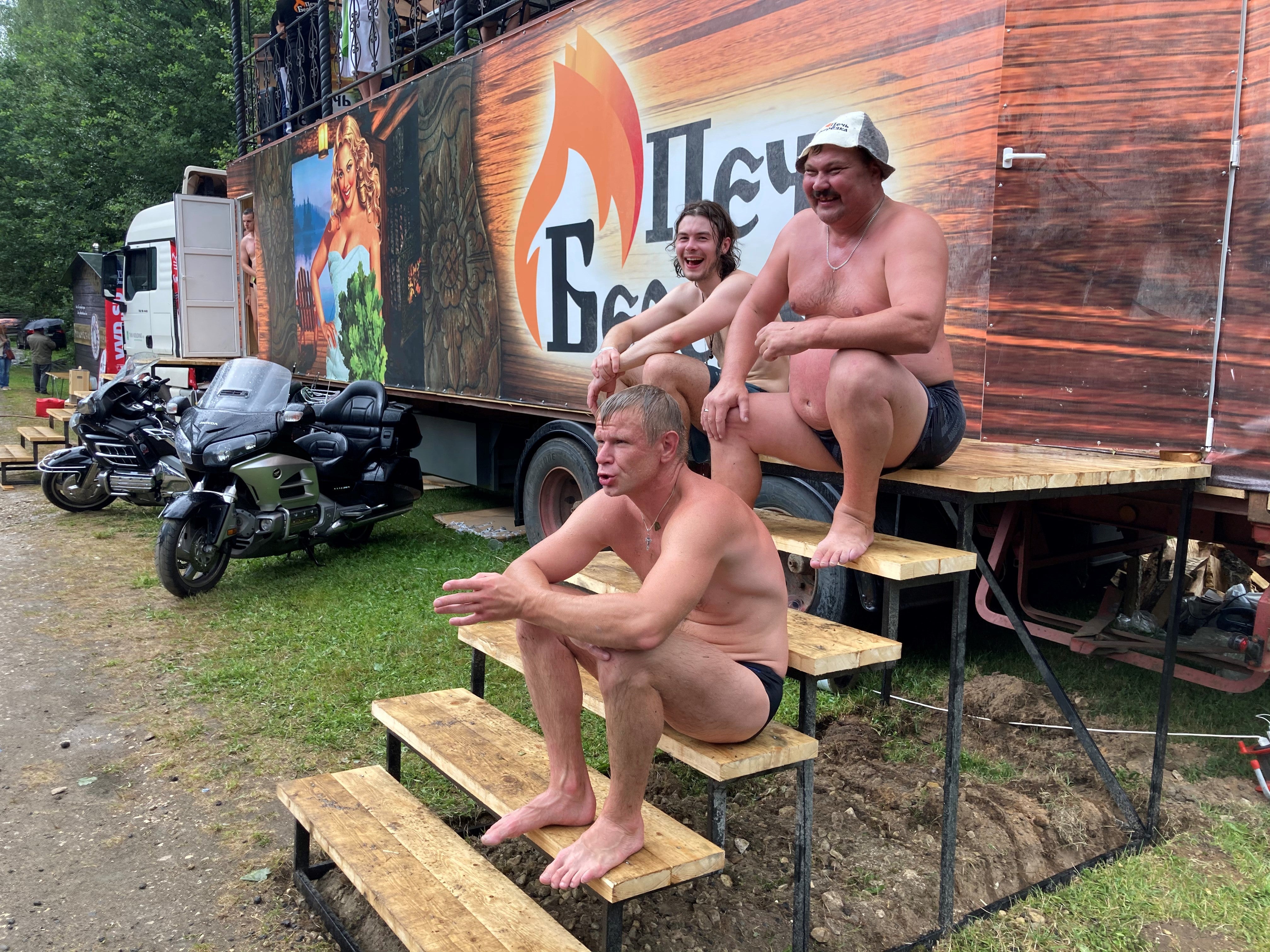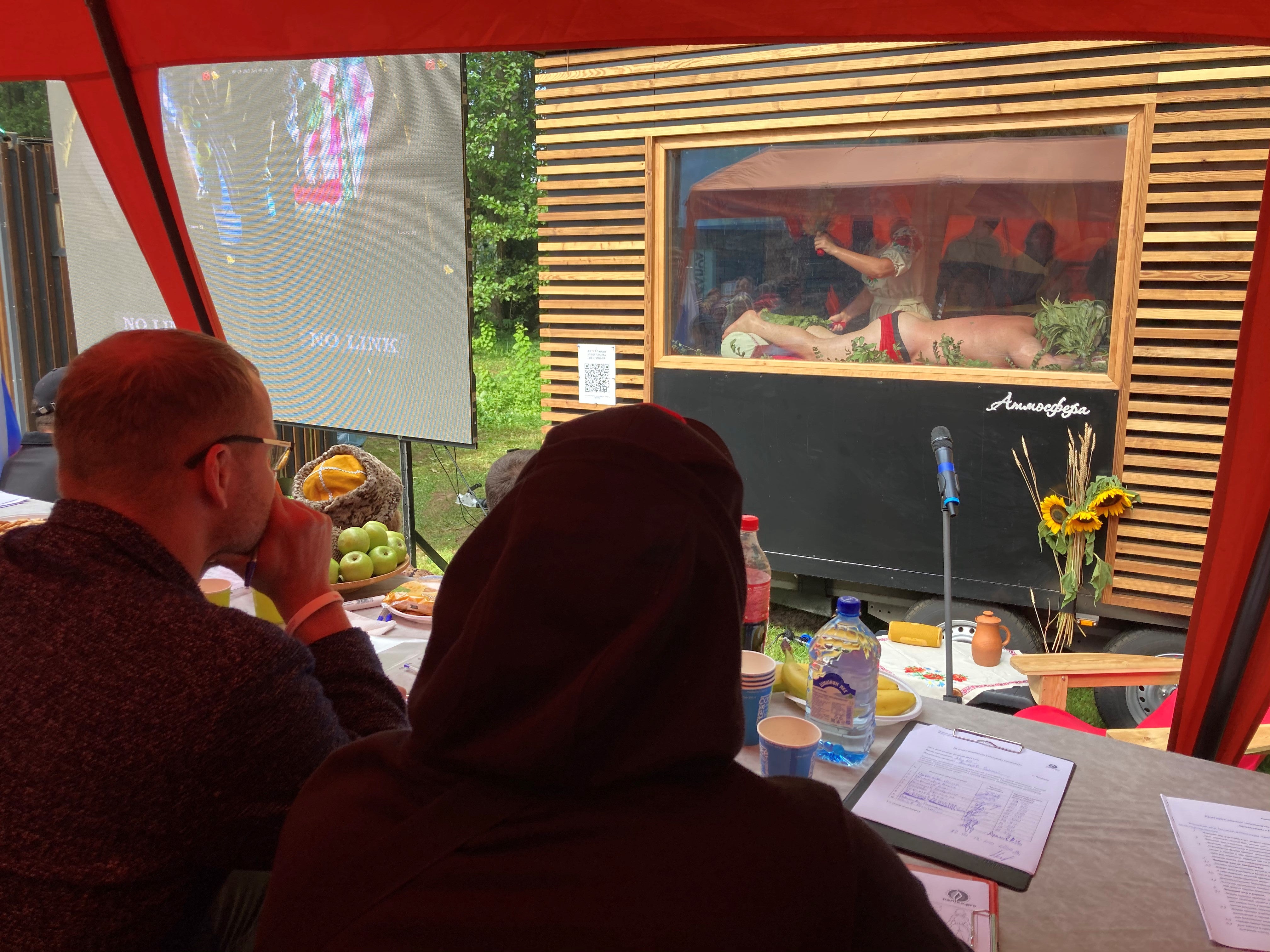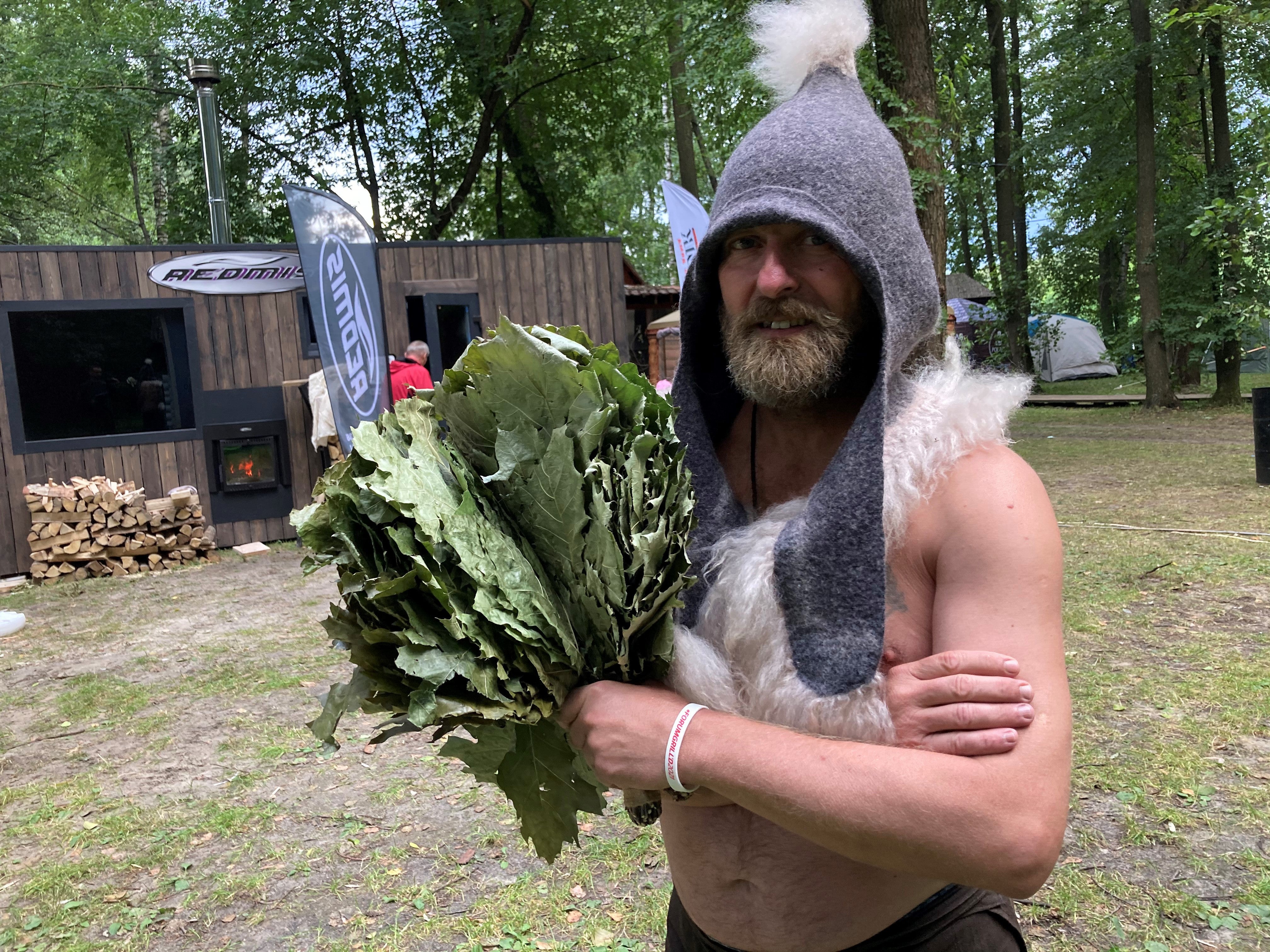Forget the Olympics, Russian sauna championships turn up the heat
The event, involving 10 grand masters, is assessed using 16 criteria from thrashing technique to safety, writes Oliver Carroll in Noginsk, near Moscow


For the uninitiated, the Russian bathhouse is a bizarre ritual involving extreme heat, humidity and a spanking by tree twigs. For the participants of this weekend’s bathhouse master “world” championships in Noginsk, two hours east of Moscow, it was the altar on which dreams and nightmares were made.
The format of the Covid-era bathhouse games changed little from previous years – bar, perhaps, a little extra coughing. As before, 10 grand masters, whittled down from 240 competitors from Vladivostok to Voronezh, presented short steam programmes to an audience of hundreds. Judges, who sat under a gazebo opposite the Portakabin steam room, marked the hopefuls, figure-skating style, using 16 criteria from thrashing technique to safety.

It was, by all accounts, the strongest line-up in the competition’s decade-long history, with decimal points eventually deciding the winner.
The bathhouse, or banya, is an indelible part of Slavic life and dates back to before the formation of Russia itself. Somewhere between a Finnish sauna and a Turkish hammam, the banya’s key distinction is its ability to move between wet and dry heat.
The Russian steam room also uniquely makes use of oils, herbs and bunched tree twigs called veniki, used by a bathhouse master (banshchik) to thrash naked bodies to a state of exultation. The process uses temperature contrasts (snow or ice-cold water) to increase blood circulation and is repeated several times over.
What it is about is engaging with the body and soul. You won’t find a cheaper psychologist
In pre-revolutionary times, the bathhouse was considered an all-in-one cure, able to help with anything from childbirth to syphilis. Catherine the Great, for all her European sensibilities, was a fan. In modern culture, it tends to be more closely associated with the mafia, alcohol and prostitutes.
There were a few hints of macho culture on show at the games this weekend. In one corner, a Cossack soldier demonstrated massage techniques using daggers and an axe. Across the way, drunk, bare-bellied colleagues roared with appreciation at skull-piercing Nineties beats that accompanied the competition.
But leading banya masters insist the seedier sides of bathhouse culture are on their way out as the industry looks to re-engage with “traditional roots”. Yevgeny Klimov, aka “Petrovich”, a former special forces officer who fought in Afghanistan before opening his own banya, said the “core philosophy” of the steam room has changed over the last 20 years.

“The banya was once about hookers and booze, but now it’s about being a temple of health,” he said. “What it is about is engaging with the body and soul. You won’t find a cheaper psychologist.”
Unusually for the male-dominated industry, three women banya masters made this year’s competition final. They included Julia Scherbakova from Krasnodar, a novice banshchik who had surprised everyone by reaching the final first time after barely a year in professional practice.
She told The Independent that she did not see her sex as an impediment, and insisted there was a strong female aspect to the ritual.
“Man or woman, everyone is naked in the banya,” she said. “You don’t need biceps to do what I do. I can thrash someone tenderly, and I’ll have the same effect as the man next door.”
I realised this was what I was born to do. I hope today will be another watershed in my life
Scherbakova’s “Cossack-Kuban” 15-minute show, which featured flowers and beautiful traditional peasant costumes, opened the main competition. It was followed by more heavy-duty, high-temperature offerings, including a presentation from Kazan entitled simply “Get high, my brother”.
Another masterclass from Rostov-on-Don claimed it would “save Russia” from a coming apocalypse: “The world is topsy-turvy, all in a mix, but the banya will protect us.”
All fell short in the end, with not a claim of doping in sight. The eventual winner, Dmitry Orlov, won through with what judges described as a faultless programme of “energy and rebirth”. He was duly awarded a motley collection of items for his prize: a wooden chair, a drone and a banya master ring.

The banya had played a key role upending his own life, Orlov told The Independent afterwards. Three years ago, he was a consultant engineer at an insurance company. A month-long holiday studying the banya changed all that, and set him off on a new path.
“I realised this was what I was born to do,” the victor said. “I hope today will be another watershed in my life.”
Join our commenting forum
Join thought-provoking conversations, follow other Independent readers and see their replies
Comments